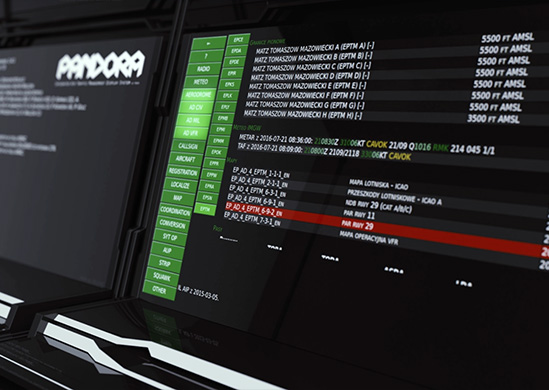PANDORA
Polska Agencja Żeglugi Powietrznej to jedyna instytucja w Polsce zatrudniająca cywilnych kontrolerów ruchu lotniczego. Jako organizacja o celach strategicznych nastawionych na bezpieczeństwo, skuteczność i rozwój, PAŻP doskonale rozumie aktualne wymagania i potrzeby kontrolerów ruchu lotniczego i innego personelu operacyjnego. Wyzwania związane z digitalizacją oraz łatwym i szybkim dostępem do różnych informacji, a co za tym idzie utrzymaniem wysokiego poziomu bezpieczeństwa i redukcją opóźnień, wymagają nowych rozwiązań technologicznych. Potrzeba dostosowania się do powyższych wyzwań i zmieniającego się środowiska sprawiła, iż PAŻP opracował, wdrożył i rozwija autorski System Wyświetlania Informacji (ang. Information Display System) PANDORA.

